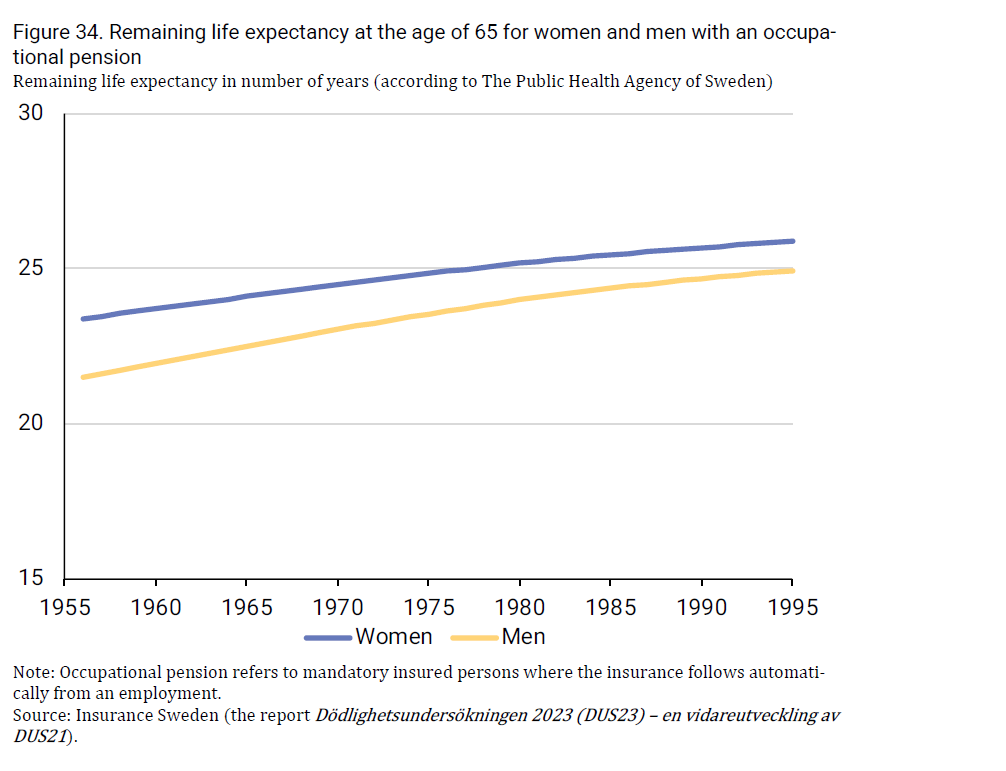
Life expectancy in Sweden is increasing. Following from this pension pay-ments, on average, need to cover a longer period of time for retirees, result-ing in lower annual pension amounts.
For example, a woman born in 1995 with an occupational pension is ex-pected to live an additional 26 years after reaching the age of 65, i.e. until the age of 91. This is more than two years longer than a woman born in 1956 with an occupational pension is expected to live after reaching the age of 65. This implies that a woman born in 1995 needs to save more than a woman born in 1956 to achieve the same annual pension, assuming the same retire-ment age and all other factors being equal. A similar trend is observed for men. A man born in 1995 is expected to live approximately three years longer than a man born in 1956.
Furthermore, the estimated life expectancy for women is estimated to be around two years higher compared to men after the age of 65, but the differ-ence is decreasing over time. The reasons for the decreasing difference be-tween the genders are complex, but the main reason is that the risk of dying from heart disease and stroke has decreased faster for men than for women. Also, the proportion of smokers has decreased more among men compared to women.